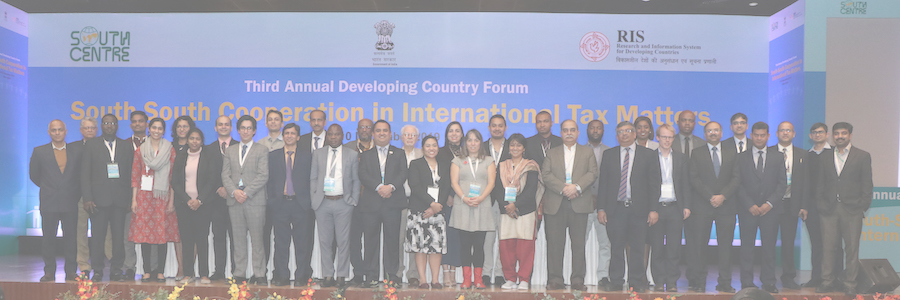BRICS
Winds of Change: The BRICS Club of Nations Chipping Away at Western Dominance
The Dawn of the New South
By Len Ishmael, PhD
This era of polycrises, a global health pandemic coupled with wars in Europe and the Middle East, against the backdrop of Great Power rivalry and climate related emergencies, has profoundly affected all countries, rich and poor alike. Disproportionately affected have been those of the Global South for whom the World Bank has cautioned a ‘decade of lost development.’ As rising geopolitical tensions fuel security concerns, the nature of economic ties between countries is changing. Several countries – spearheaded by BRICS members – have started to consider alternatives to the Western financial institutional architecture in a bid to safeguard their own interests. These measures risk fragmenting the existing global financial infrastructure and derailing benefits derived from decades of economic integration in the face of new barriers to cross border investment, commerce, and trade. Recent research shows that trade restrictions have more than tripled since 2019, financial sanctions have expanded and the geopolitical risk index has also spiked, following Russia’s invasion of Ukraine. After decades of accepting the West’s rules, there is a sense that the era of the Global South is dawning, and that Western interests are no longer de facto those of the rest of the world. It is in this milieu that the BRICS and their initiatives take on heightened economic and political significance.
(more…)
What Is Driving the BRICS’ Debate on De-Dollarisation?
By Ding Yifan
Ahead of the 2023 BRICS summit in Johannesburg, South Africa, there was much discussion amongst the member countries about whether negotiations would take place at the meeting regarding the development of a BRICS currency and the acceleration of de-dollarisation, that is, the promotion of currency cooperation and reduction in the use of the US dollar. In the end, the country leaders did not specifically discuss the issue of a BRICS currency but passed a resolution on expanding the organisation’s membership. Nonetheless, from both historical and realist perspectives, it is in the interest of the BRICS countries to promote de-dollarisation.
(more…)
Desafíos actuales y posibles escenarios futuros de la salud mundial
By Germán Velásquez
Hace cuatro décadas los principales actores en la salud global eran la Organización Mundial de la salud (OMS), el Fondo de las Naciones Unidas para la Infancia (UNICEF) y los Estados Unidos de América y los países de Europa del Norte (mediante cooperación bilateral). Hoy asistimos a la proliferación de actores en este campo si bien con diferentes roles , ámbito de acción y niveles de influencia: La OMS, UNICEF, el Programa Conjunto de las Naciones Unidas sobre el VIH/SIDA (ONUSIDA), UNITAID, la Organización Mundial del Comercio (OMC), la Organización Mundial de la Propiedad Intelectual (OMPI), el Programa de las Naciones Unidas para el Desarrollo (PNUD), la Organización de las Naciones Unidas para la Agricultura y la Alimentación (FAO), el Fondo Monetario Internacional (FMI), el Banco Mundial, el G7 y el G20, el G77+China, el Movimiento de No Alineados, los BRICS (Brasil, Rusia, India, China y Sudáfrica), el Fondo Global, GAVI, COVAX, la industria farmacéutica, Bill & Melinda Gates y otras fundaciones y organizaciones no gubernamentales (ONGs) sin o con ánimo de lucro.
Este documento de investigación analiza el papel de los múltiples actores (públicos, privados y filantrópicos) en la salud global y, con base a ello, procura esbozar posibles escenarios futuros. En particular, examina el papel de la OMS bajo cuyos auspicios los países miembros están, desde hace dos años, negociando una reforma del Reglamento Sanitario Internacional (RSI) del 2005 y la posible adopción de un nuevo instrumento internacional para prevenir y dar una respuesta a futuras pandemias como la del COVID-19. La aplicación de estos instrumentos, si se adoptaran, estaría en manos de la OMS, uno de los principales actores de la salud mundial.
(more…)
Trends, Reasons and Prospects of De-dollarization
By Yuefen Li
The 1944 “Bretton Woods Agreement” gave birth to the new international financial system marked by the centrality of the US dollar which is a crucial pillar of the global power of the United States. Over the past eight decades, the asymmetry of the shrinking US economic weight in the world economy and growing dominant role of the dollar has become more and more glaring. The disadvantages of overreliance on the dollar have been keenly felt, especially by developing countries. The recent moves to weaponize the dollar and the payment clearance system have triggered another wave of reassessment by national states and enterprises of the role of the dollar and led to the hitherto most broad-based de-dollarization process covering from Southeast Asia to Latin America and the Middle East. De-dollarization has been incrementally taking place in different forms and led by BRICS and some commodity exporting countries. However, there are many challenges to meaningful de-dollarization. Overall, de-dollarization efforts, despite important progress, have been limited and partial. There has been progress in reducing overreliance on the dollar through foreign exchange reserve diversification and trade invoicing as evidenced by the decline in the dollar’s share of allocated foreign exchange reserves and the increase of trade invoiced and transacted in currencies other than the dollar. However, on aspects requiring the deep financial market and wide network such as foreign exchange transactions, issuance of debt and payment clearance, the dollar’s share has not suffered a decline. To reform the international financial system, the BRICS in particular should continue to take the lead in furthering the de-dollarization efforts.
(more…)
Trends, reasons and prospects of de-dollarization
By Yuefen Li
The 1944 “Bretton Woods Agreement” gave birth to the new international financial system marked by the centrality of the US dollar which is a crucial pillar of the global power of the United States. Over the past eight decades, the asymmetry of the shrinking US economic weight in the world economy and growing dominant role of the dollar has become more and more glaring. The disadvantages of overreliance on the dollar have been keenly felt, especially by developing countries. The recent moves to weaponize the dollar and the payment clearance system have triggered another wave of reassessment by national states and enterprises of the role of the dollar and led to the hitherto most broad-based de-dollarization process covering from Southeast Asia to Latin America and the Middle East. De-dollarization has been incrementally taking place in different forms and led by BRICS and some commodity exporting countries. However, there are many challenges to meaningful de-dollarization. Overall, de-dollarization efforts, despite important progress, have been limited and partial. There has been progress in reducing overreliance on the dollar through foreign exchange reserve diversification and trade invoicing as evidenced by the decline in the dollar’s share of allocated foreign exchange reserves and the increase of trade invoiced and transacted in currencies other than the dollar. However, on aspects requiring the deep financial market and wide network such as foreign exchange transactions, issuance of debt and payment clearance, the dollar’s share has not suffered a decline. To reform the international financial system, the BRICS in particular should continue to take the lead in furthering the de-dollarization efforts.
This is an advanced draft of the Research Paper.
(more…)
BRICS Bank: Doing development differently?
A prospective new financial architecture being set up by the BRICS countries promises to reform and improve development finance for the world.
(more…)
The First BRICS towards a South Bank?
A member of the South Commission (1987-1990) reflects on the moves by the recent Summit of the BRICS to establish a BRICS development bank – an idea that the Commission had promoted.
(more…)












